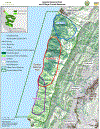The Gombe Ecosystem Health Project: 16 years of program evolution and lessons learned
- PMID: 34223656
- PMCID: PMC8727649
- DOI: 10.1002/ajp.23300
The Gombe Ecosystem Health Project: 16 years of program evolution and lessons learned
Abstract
Infectious disease outbreaks pose a significant threat to the conservation of chimpanzees (Pan troglodytes) and all threatened nonhuman primates. Characterizing and mitigating these threats to support the sustainability and welfare of wild populations is of the highest priority. In an attempt to understand and mitigate the risk of disease for the chimpanzees of Gombe National Park, Tanzania, we initiated a long-term health-monitoring program in 2004. While the initial focus was to expand the ongoing behavioral research on chimpanzees to include standardized data on clinical signs of health, it soon became evident that the scope of the project would ideally include diagnostic surveillance of pathogens for all primates (including people) and domestic animals, both within and surrounding the National Park. Integration of these data, along with in-depth post-mortem examinations, have allowed us to establish baseline health indicators to inform outbreak response. Here, we describe the development and expansion of the Gombe Ecosystem Health project, review major findings from the research and summarize the challenges and lessons learned over the past 16 years. We also highlight future directions and present the opportunities and challenges that remain when implementing studies of ecosystem health in a complex, multispecies environment.
Keywords: chimpanzees; disease transmission; ecosystem health; human-primate interactions.
© 2021 Wiley Periodicals LLC.
Figures


References
-
- Bakuza JS (2012). Epidemiology of Schistosoma mansoni infection in sympatric humans and non-human primates in the Gombe ecosystem, Tanzania. In PhD Thesis. http://theses.gla.ac.uk/3652/1/2012bakuzaphd.pdf
-
- Bakuza JS (2020). Epidemiological significance of parasitic infections in olive baboons (Papio anubis) at Gombe National Park, Tanzania. Tanzania Journal of Science, 46(1), 137–150.
-
- Bakuza JS, & Nkwengulila G (2009). Variation over time in parasite prevalence among free-ranging chimpanzees at Gombe National Park, Tanzania. International Journal of Primatology, 30(1), 43–53. 10.1007/s10764-008-9329-7 - DOI
Publication types
MeSH terms
Grants and funding
LinkOut - more resources
Full Text Sources
Miscellaneous

